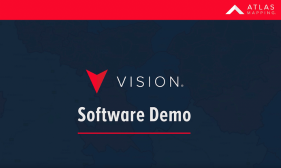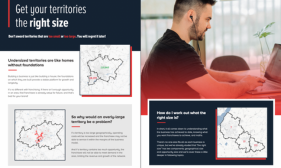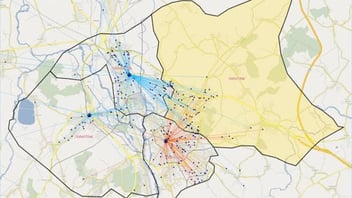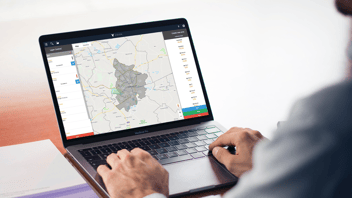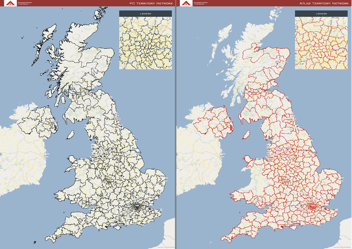May 21, 2023
If you missed part 1 of this series, you can view it here.
Once a territory’s border, the franchisee’s base location, customers and any other important stakeholders (individuals or businesses with an interest in your business) are displayed side by side on a map, the understanding of a franchisee’s trade area becomes much clearer. It can quickly be seen whether there are any customers that fall outside of a territory’s border and providing the map is clear enough, estimate the proportion of customers that originate from outside of the territory.
Following on from the previous article, this blog will cover what information is required to gain visualisation of passive sales and ways in which that information can be gathered.
What information is needed to plot locations and define territories?
- In the UK and for this level of analysis, to plot locations of customers, competitors, offices etc. accurately, a Postcode is required. This Postcode is then given a latitude and longitude coordinate and can be plotted digitally.
- There are multiple ways in which a territory’s border can be defined; the most common and useful is to allocate Postcodes, though other boundaries such as Local Authorities can influence the shape of territories for franchises that work closely with these bodies. If a Postcode allocation for each territory exists, then territory borders can be created by combining Postcode boundaries held in professional mapping software*.
*Be aware of low-cost desktop-based mapping software. Postcode boundaries are regularly updated and low-cost desktop-based mapping software often does not include a regular boundary update.
Ways to collect this information
Customer Postcodes
For a number of franchisors, franchisees keep their own record of customer sales and transactions. Therefore a franchisor can collect customer data by requesting the files directly from the franchisees. This is a common process adopted by many franchisors but can prove laborious and bureaucratic when trying to share information. With modern cloud-based technology, it is now more efficient to implement a uniform CRM system across the network. This allows franchisees to work to the same rules and systems, whilst also meaning data can be stored and managed centrally. In the modern franchise market, there are also some systems which integrate CRM with franchise management and Business Intelligence reporting.
Many cloud-based systems also come with or can be integrated with, a mobile application so that a franchisee can work through any required paperwork or business processes whilst they are out on the road or directly interacting with customers.
Territory borders
The most practical way of allocating and managing territory borders is to allocate a defined geography that can be easily referenced by your franchisees, head office and any other stakeholders in the business. For example, this could be Postcodes or Local Authorities depending on the business model you are operating. Custom boundaries that follow roads and local landmarks can become extremely difficult to manage once a network approaches a moderate size.
Sometimes a radius is awarded to site based franchises, this at first seems ideal but in practice can become extremely hard to manage and results in an inefficient and unbalanced network. For example, will a 5-mile radius in London contain anywhere near the same level of commercial opportunity as a 5-mile radius in an average sized town?
If you are going to proceed to use defined geography then the allocation must be stored and kept up-to-date. This again is made easier by holding the information in a cloud-based system such as a franchise management system or territory management system. By storing information in such a system, updates can be regularly made and the whole team can work from the same page. More information on these sorts of systems can be found on our My Franchise Atlas page.
Update: My Franchise Atlas is no longer available. On 25th October 2016, we launched Vision. Vision builds and improves on the high standard My Franchise Atlas set previously. Read more here.

